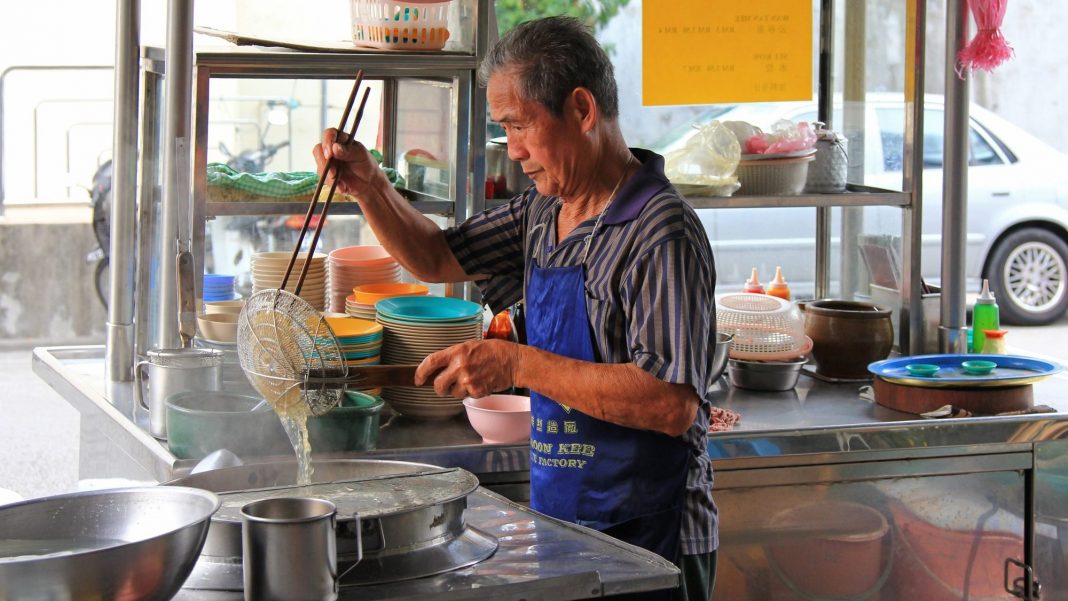SINGAPORE: The financial viability of the city-state’s iconic hawker trade is rapidly becoming a ticking time bomb. For many hawkers, mounting pressures from rising manpower and raw material costs are pushing them to the brink.
With some hawker businesses reporting operating expenses exceeding S$10,000 per month, the challenge of balancing these costs with the public’s expectation for affordable meals has led to dangerously thin profit margins—often as low as 20 to 30 cents per bowl.
The ramifications of this financial strain are far-reaching, according to a commentary published by Channel News Asia. Older generations of hawkers, exhausted by these pressures, are increasingly reluctant to pass on their businesses to younger generations.
For instance, Melvin Soh, the owner of Toast Hut, a 17-year-old hawker stall, recently shut down due to the inability to meet the salary demands of potential employees.
Similarly, Hong Sheng Restaurant, a Toa Payoh zi char stall that had been in operation for over 50 years, ceased its operations, and older hawkers are now discouraging their children from entering the trade.
These closures are not isolated cases but part of a broader, systemic issue threatening the very fabric of Singapore’s beloved hawker culture.
Despite the mounting costs, increasing prices is not a simple solution. In one striking example, hawker Douglas Ng raised the price of his fishball noodles by just 50 cents, only to witness a drastic 40-50% drop in his customer base.
This highlights a key issue: while the cost of running a hawker stall rises, many Singaporeans still expect to pay low prices for local fare. But what drives this reluctance to accept higher prices for hawker food?
According to former head chef Nurl Asyraffie Mohamed Shukor, now operating his own stall, Kerabu by Arang, the public often does not appreciate the extensive work that goes into preparing hawker dishes.
As he explains, his chicken dish requires several hours of preparation—brining, marinating, and slow cooking. Yet many patrons still baulk at the price, thinking a dish should cost just S$3.
In contrast, some hawker stalls serving Western-style cuisine, such as BlackGoat, charge significantly more, with prices ranging from S$9 for a brownie to S$59.50 for a 495g striploin. Reviews of BlackGoat, however, suggest that customers deem the higher prices “value for money.”
Why the reluctance – Inherent prejudice
This raises a curious question – why are Singaporeans more willing to pay premium prices for non-local cuisines while expecting local dishes to remain cheap?
One possible explanation is an internalized bias—many perceive Singaporean food as everyday sustenance, while foreign cuisines, such as Italian or Japanese, are considered more “special.”
The idea that local hawker food should remain affordable for daily consumption, regardless of the costs incurred by hawkers, continues to dominate public perception.
However, this mentality overlooks that some local entrepreneurs have successfully sold Singaporean dishes at premium prices outside traditional hawker centres.
The Coconut Club, for instance, charges S$22.80 for its signature ayam goreng berempah nasi lemak, while Zhup Zhup, a trendy open-air eatery, charges between S$14 and S$20 for prawn noodles.
Hawker centre: A cultural cornerstone
Hawker centres have long been a cornerstone of Singapore’s food culture, providing affordable and accessible meals to all, regardless of socioeconomic status.
According to a 2018 survey by the National Environment Agency (NEA), 83% of Singaporeans eat hawker food at least once a week. Yet, hawkers are not only tasked with offering daily sustenance; they are also the custodians of a UNESCO-recognized intangible cultural heritage.
With the rise of chronic health conditions like diabetes and heart disease, there is additional pressure on hawkers to offer healthier food options.
But is it fair to continue imposing these responsibilities on hawkers? Should local hawker food remain a cheap, everyday commodity in the face of the country’s high cost of living?
One factor that is often overlooked in discussions about hawker food prices is rent. Many argue that raising prices could lead to an increase in rental fees, which would ultimately hurt hawkers.
However, data from the NEA shows that the median market rent for cooked food stalls has remained relatively stable since 2019, with most stalls paying below the assessed market rate.
Despite this, some still hold the view that price hikes would disproportionately impact lower-income households, which rely heavily on affordable hawker food.
Affordability vs. sustainability
This argument, however, highlights a striking irony: many hawkers themselves earn incomes within the second-lowest income decile. This fact underscores the challenges they face in maintaining affordable prices and sustainable livelihoods.
Singapore’s hawker food culture is deeply embedded in daily life—conveniently accessible at work and in housing estates. The low prices of hawker food are subsidized by the lives of hawkers, whose work schedules often extend far beyond the typical 9-to-5.
So, how can we preserve the future of hawker food culture while addressing these economic and cultural challenges? One possible solution may lie in changing the working culture itself. Encouraging Singaporeans to cook more at home, as in other developed countries, could alleviate pressure on hawkers to provide low-cost meals.
While this idea may initially seem counterintuitive, such a cultural shift could be crucial in preserving the hawker trade for future generations. The debate over hawker food prices is an economic and cultural issue.
For those who grew up in Singapore, there is always immense pride in the affordability and quality of hawker food. The ability to enjoy a S$3 chicken rice or a 50-cent char siu bao is a uniquely Singaporean experience.
But as the situation becomes more dire, there is the question of what Singaporeans are truly celebrating every time the affordability of hawker food is touted as one of its defining features.
As Singapore navigates its future, the balance between preserving the hawker food heritage and addressing the economic pressures on hawkers will be a delicate one.
The conversation must evolve from one of simple affordability to a more holistic understanding of the trade’s true value. Only then will there be the assurance that Singapore’s hawker culture will endure for generations to come.
Featured image by Depositphotos (for illustration purposes only)





